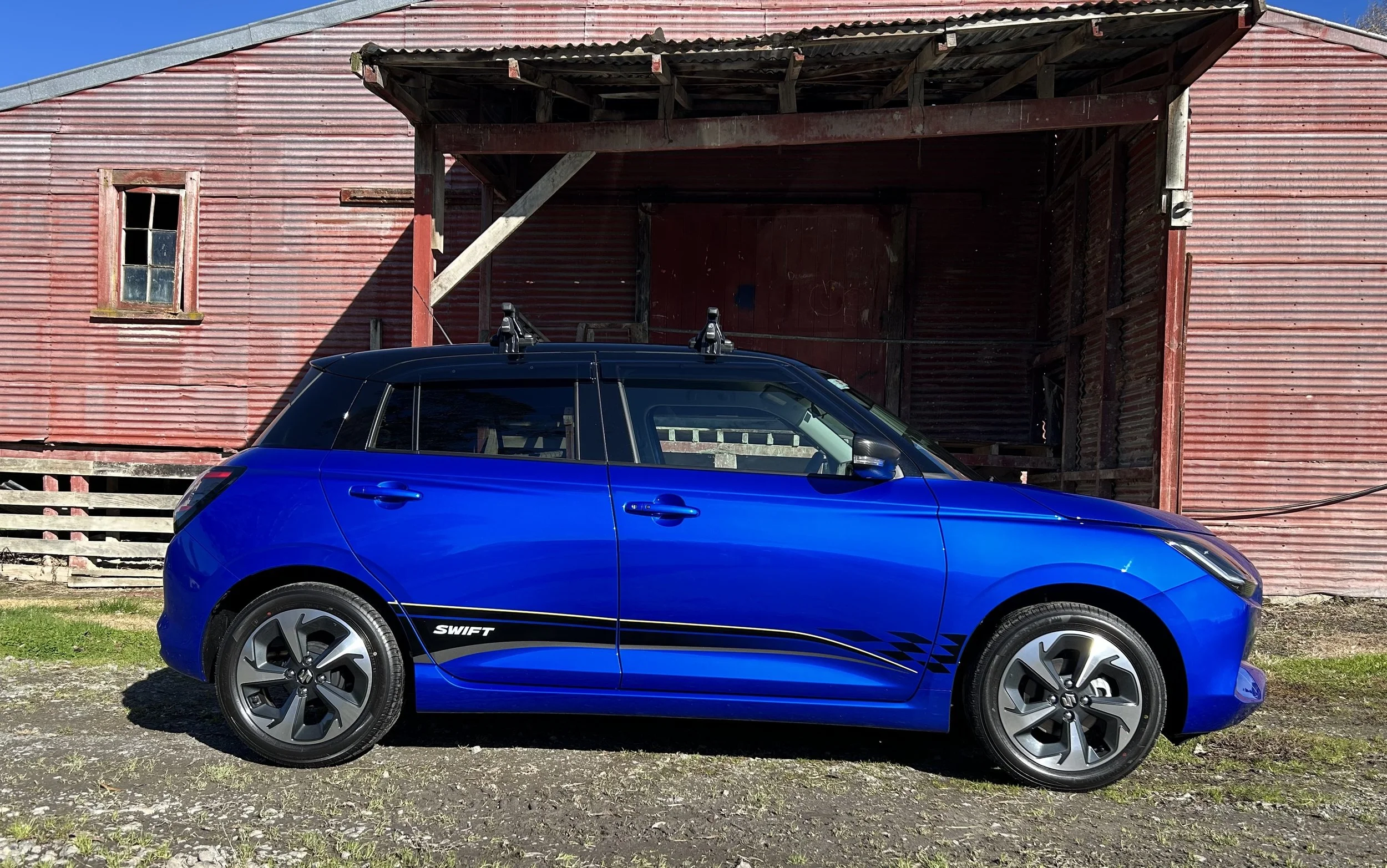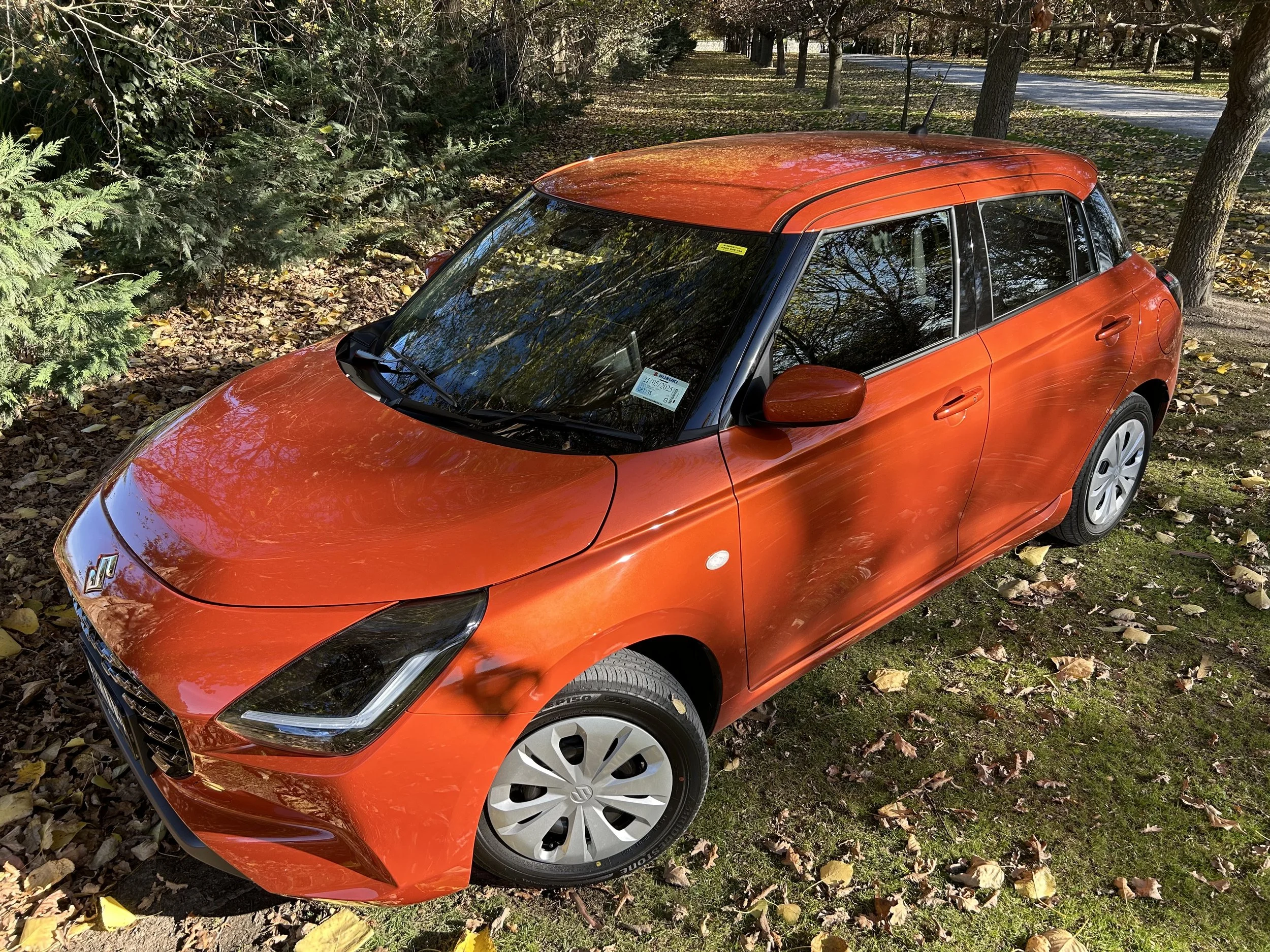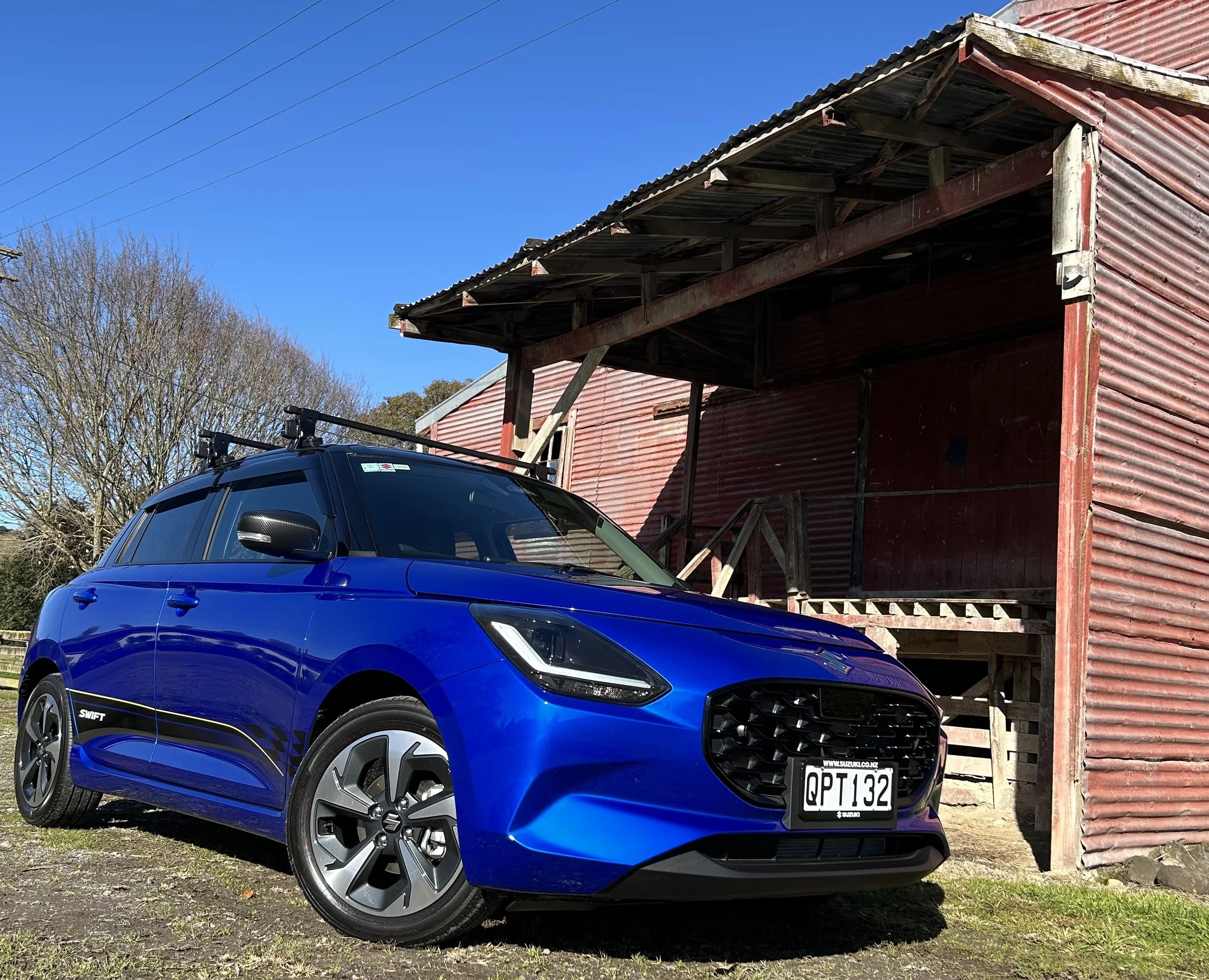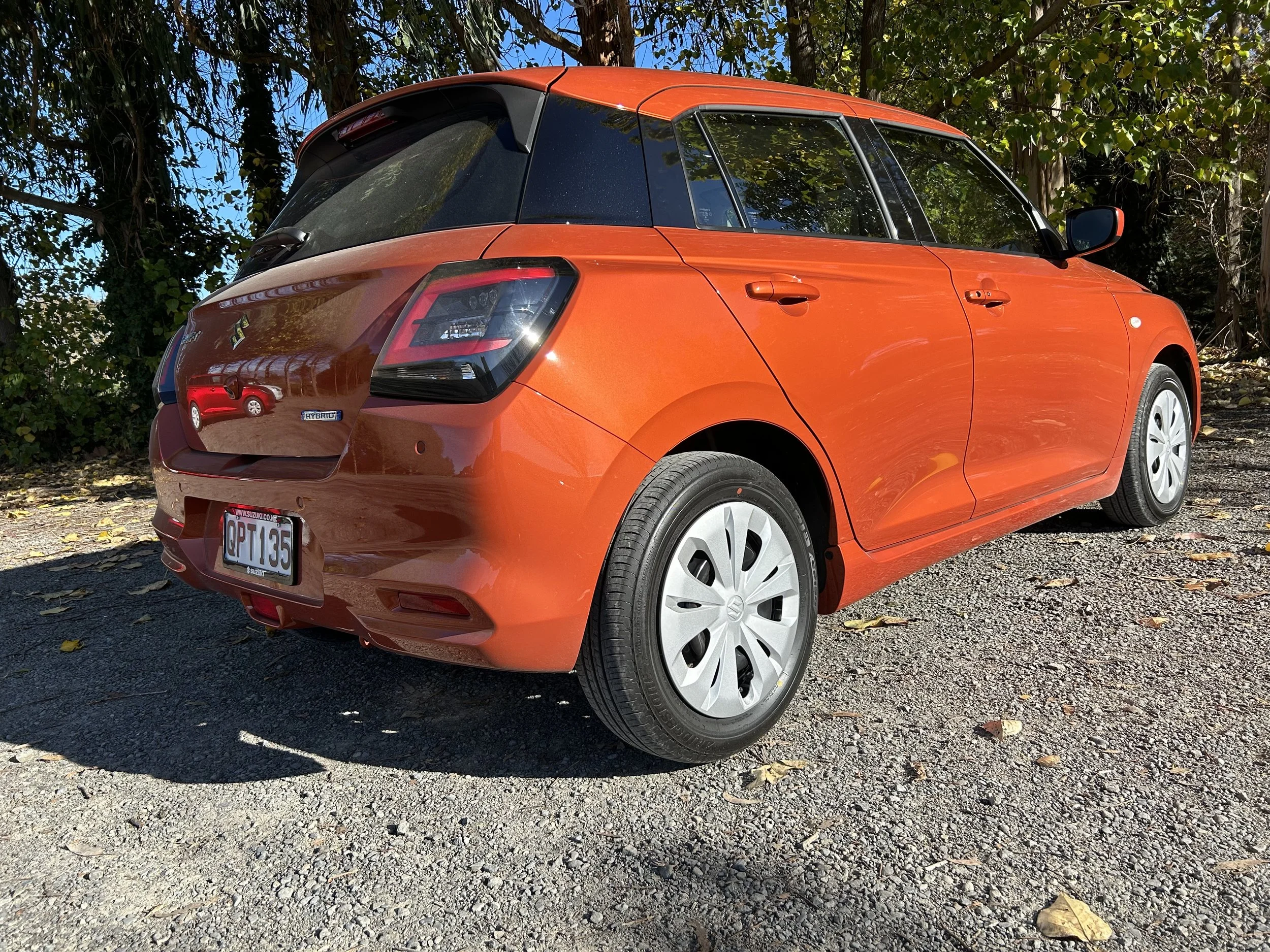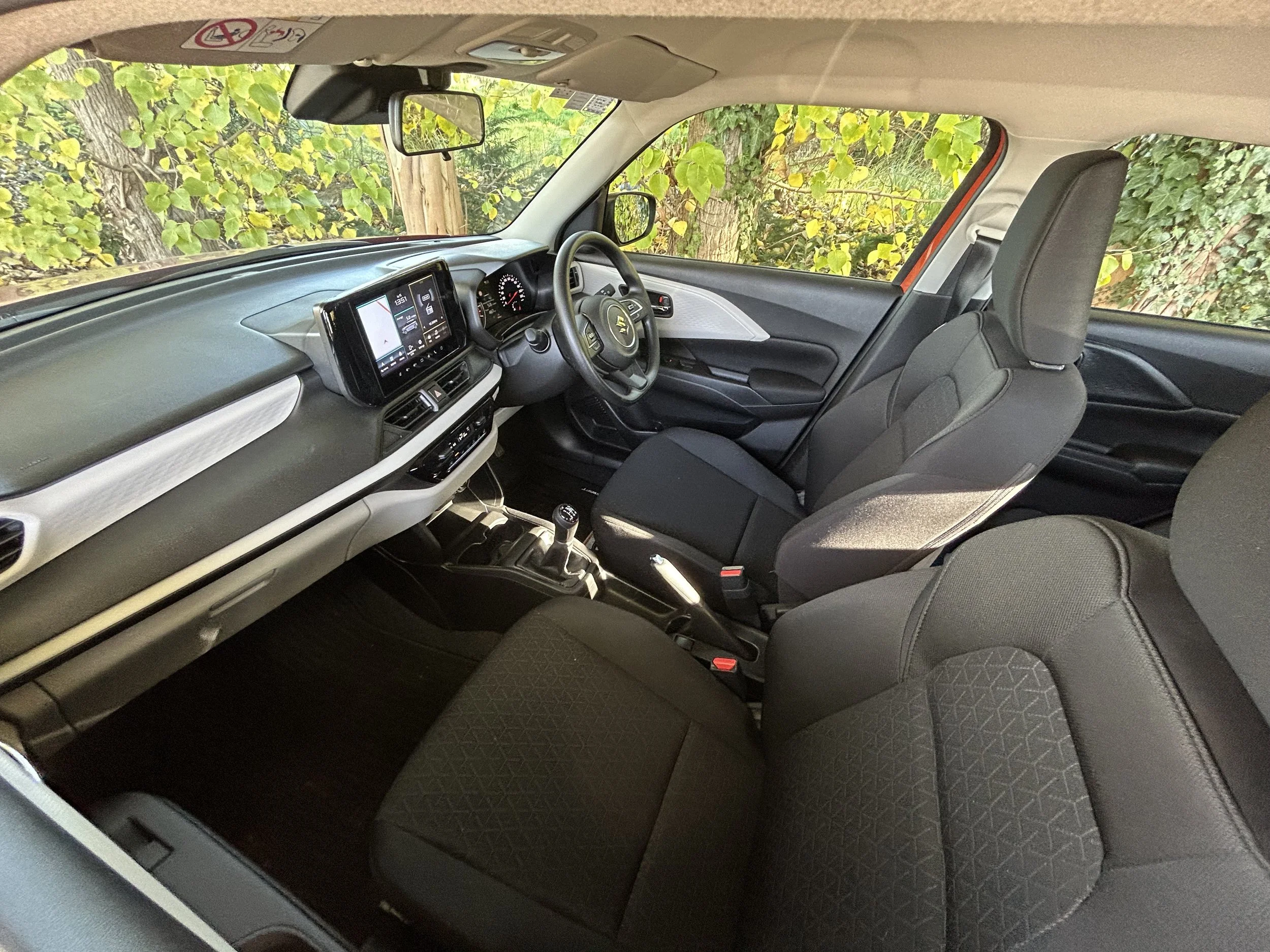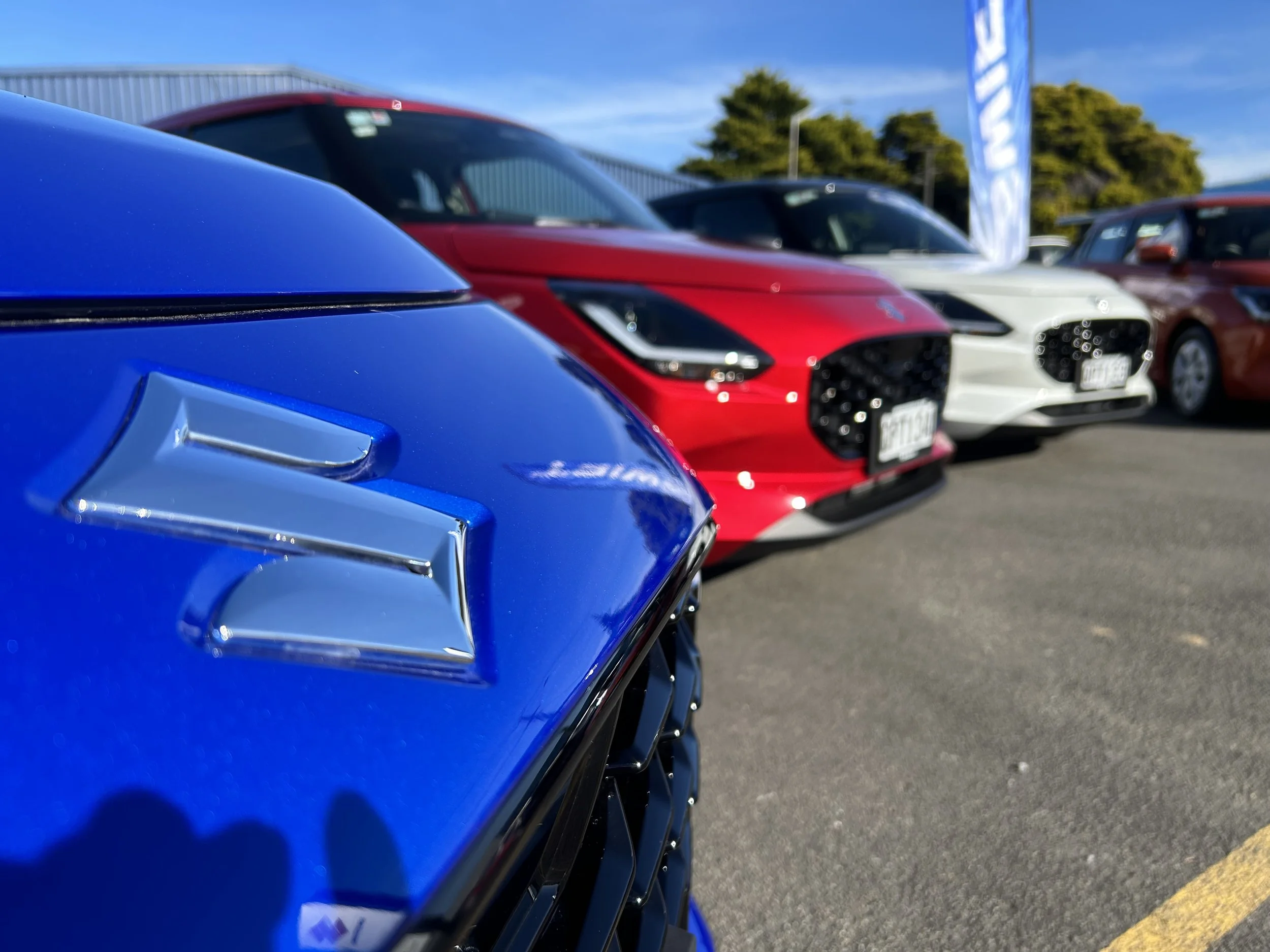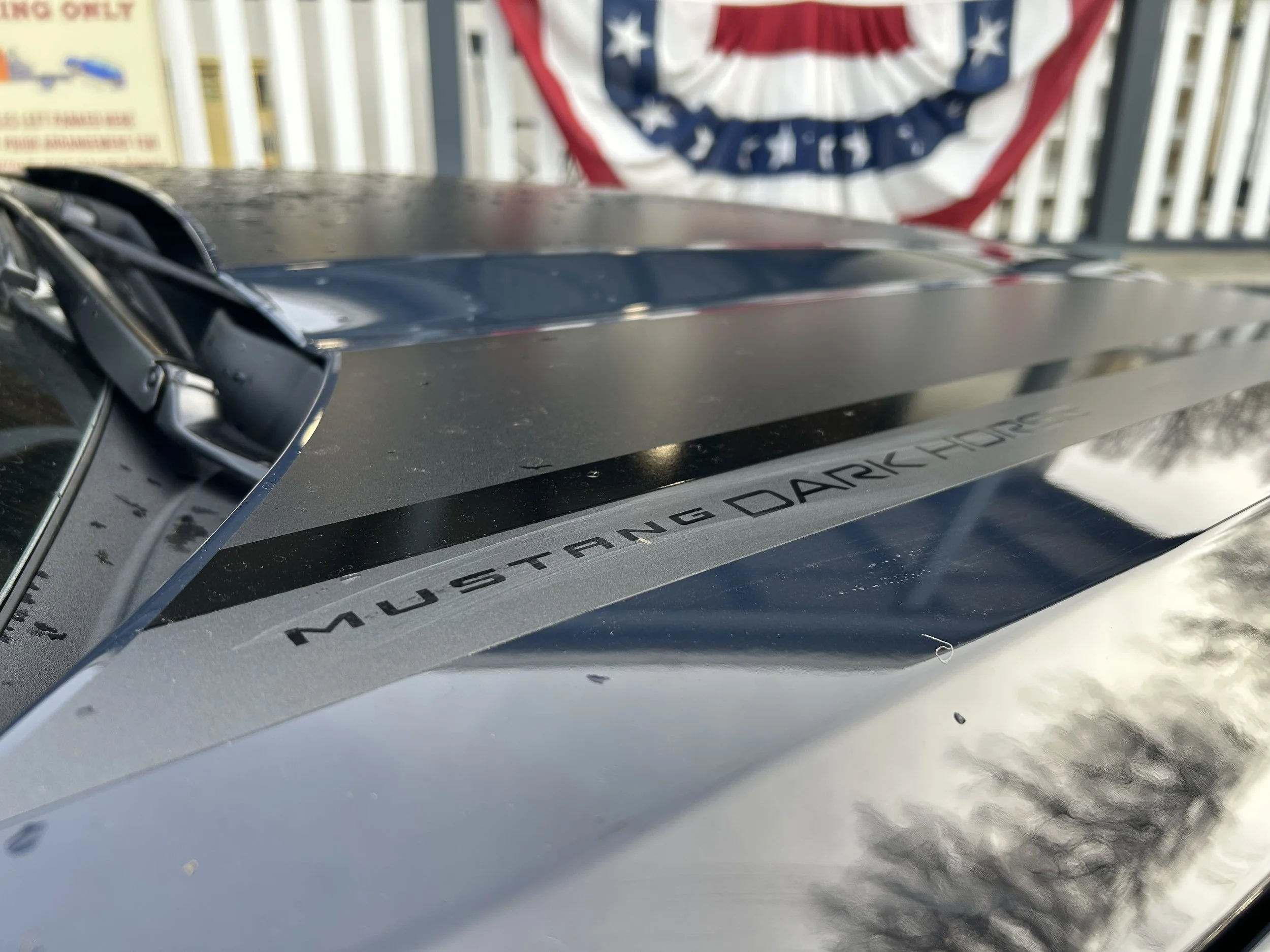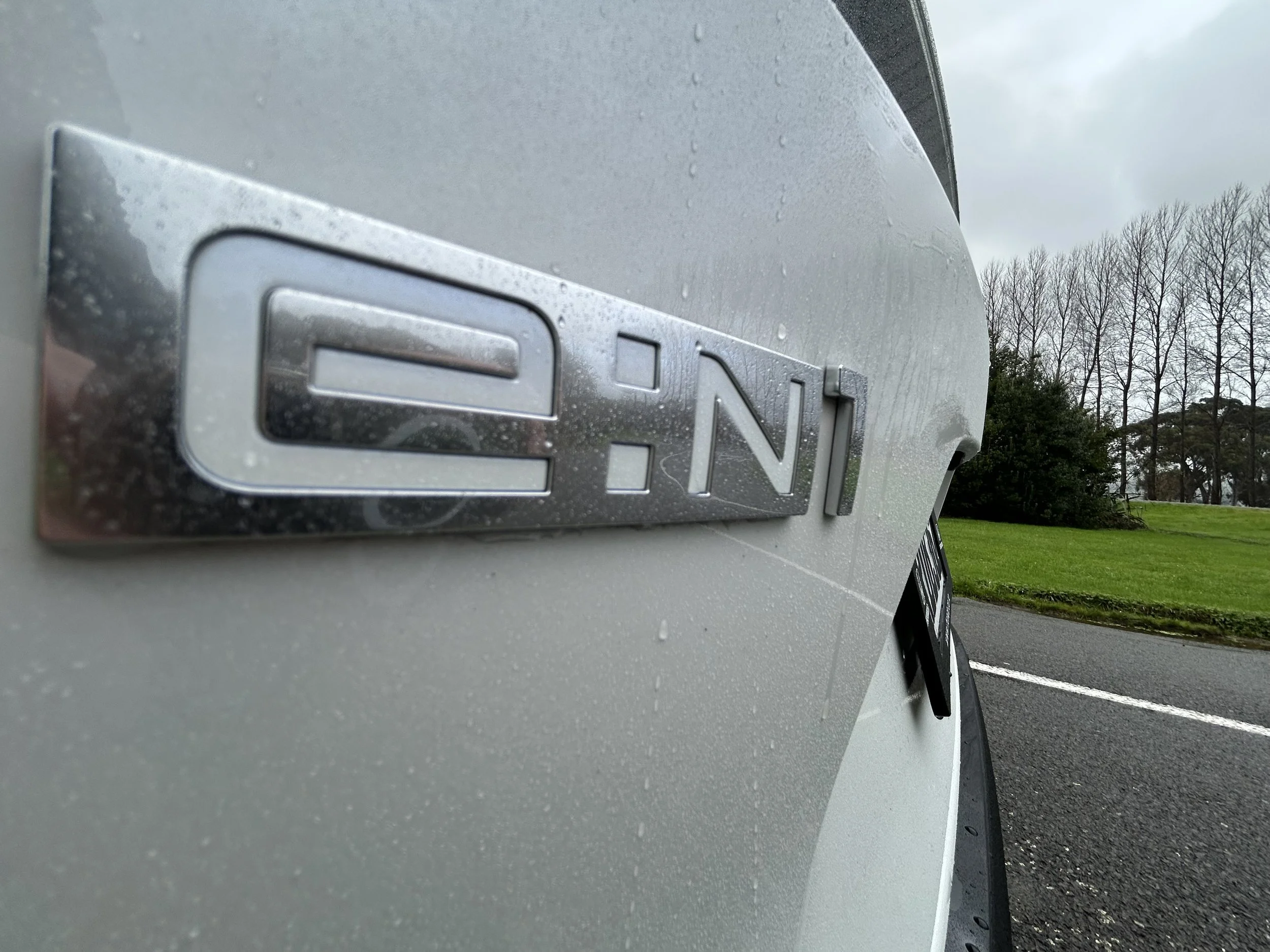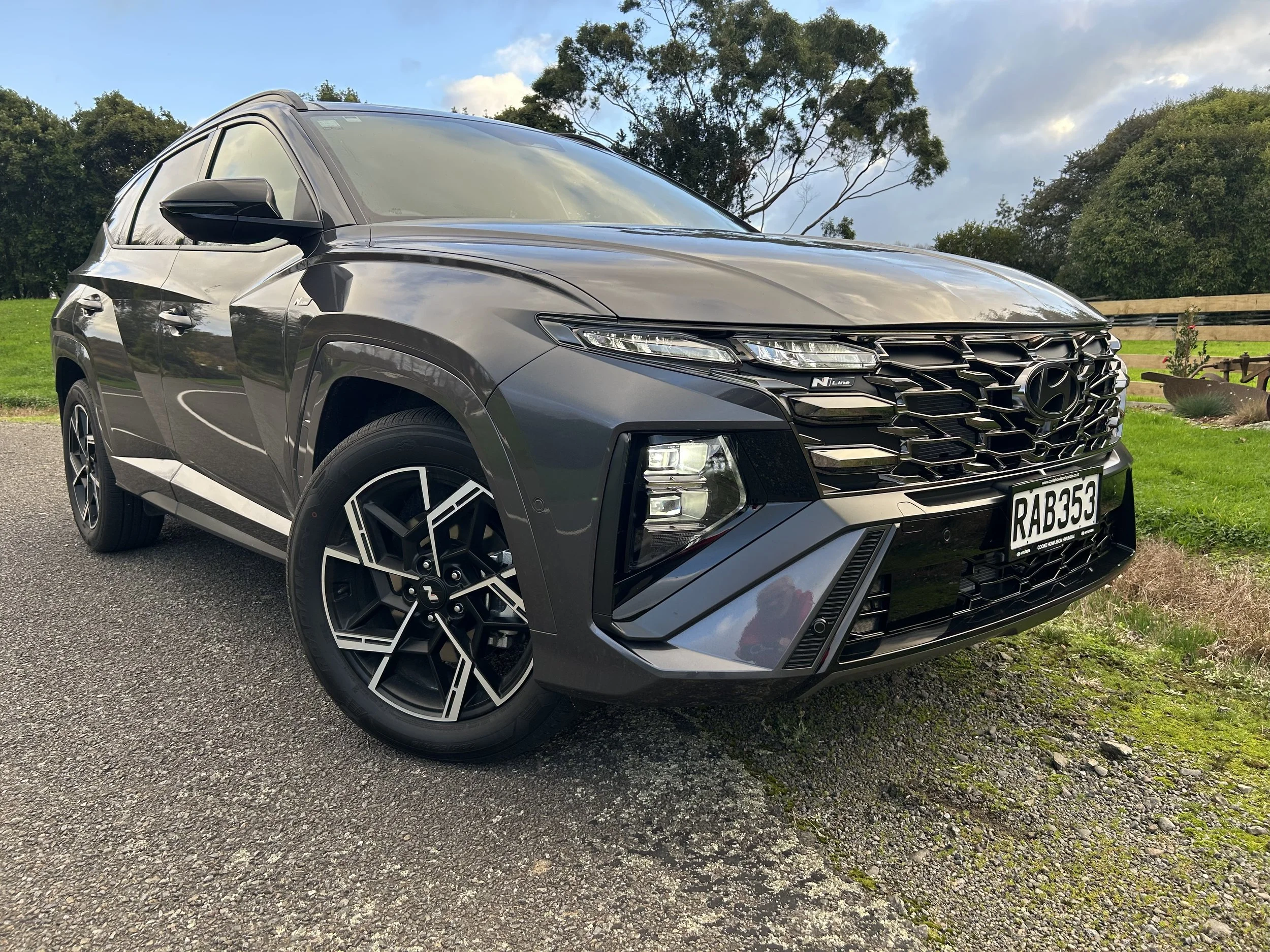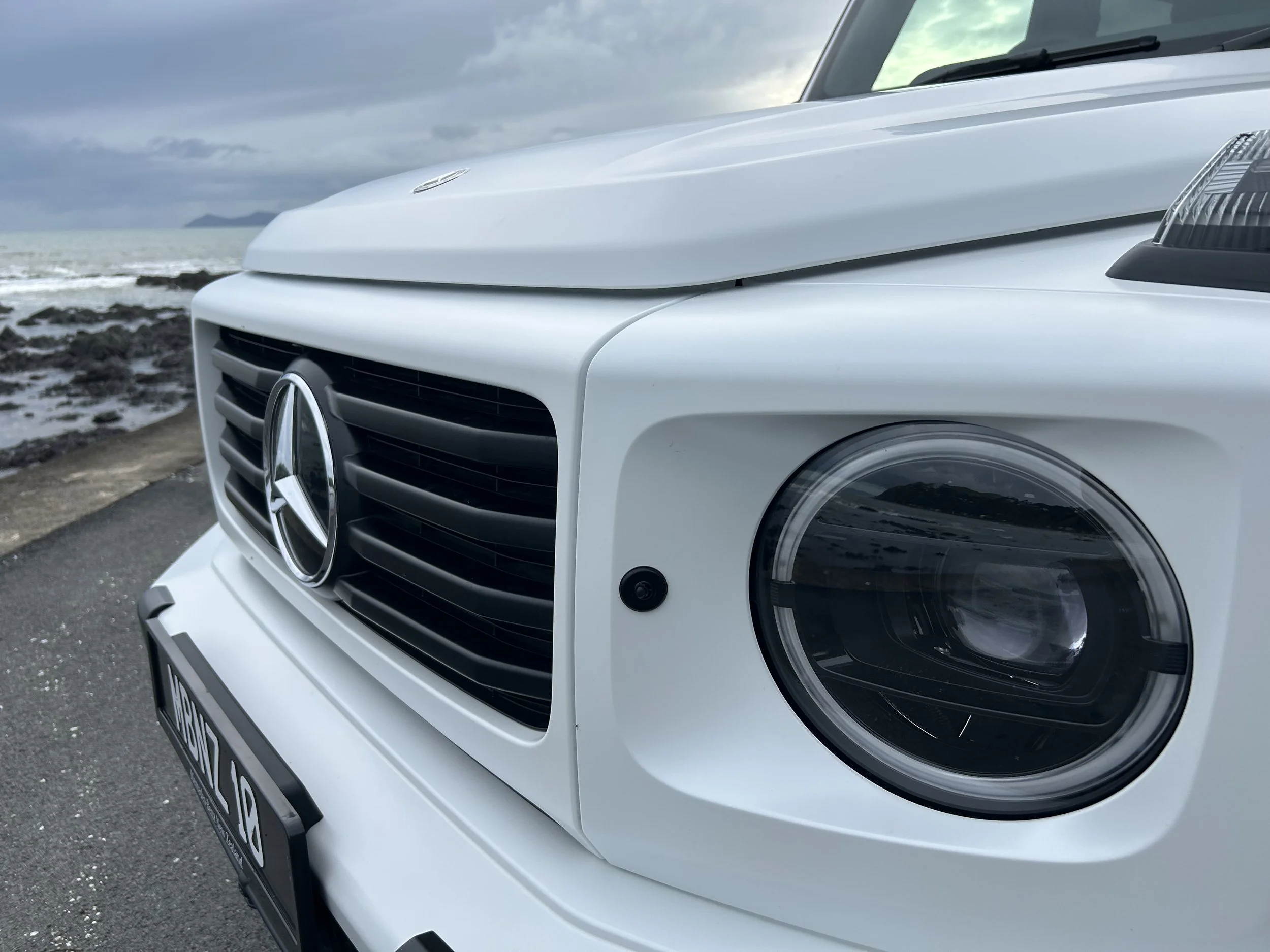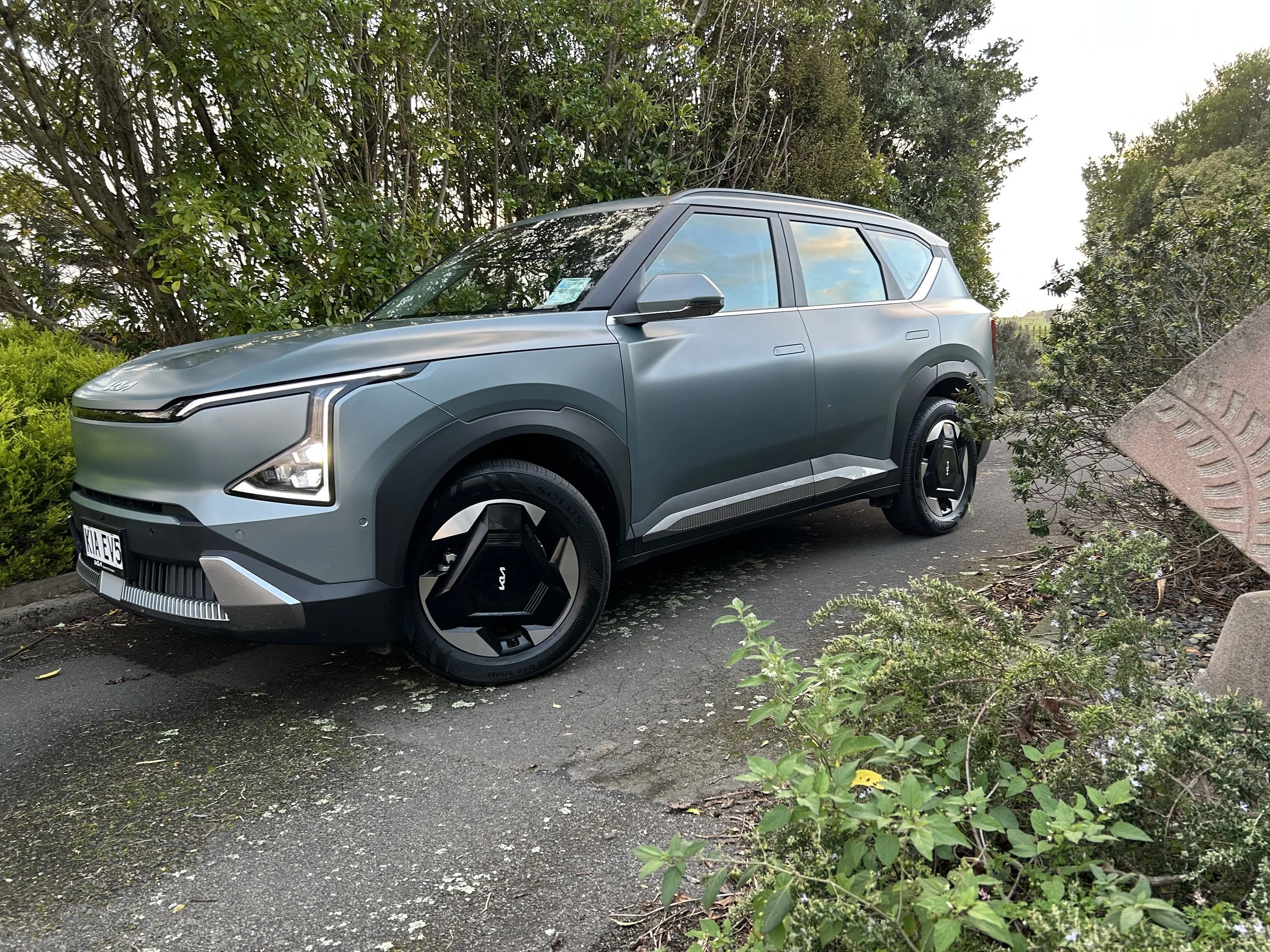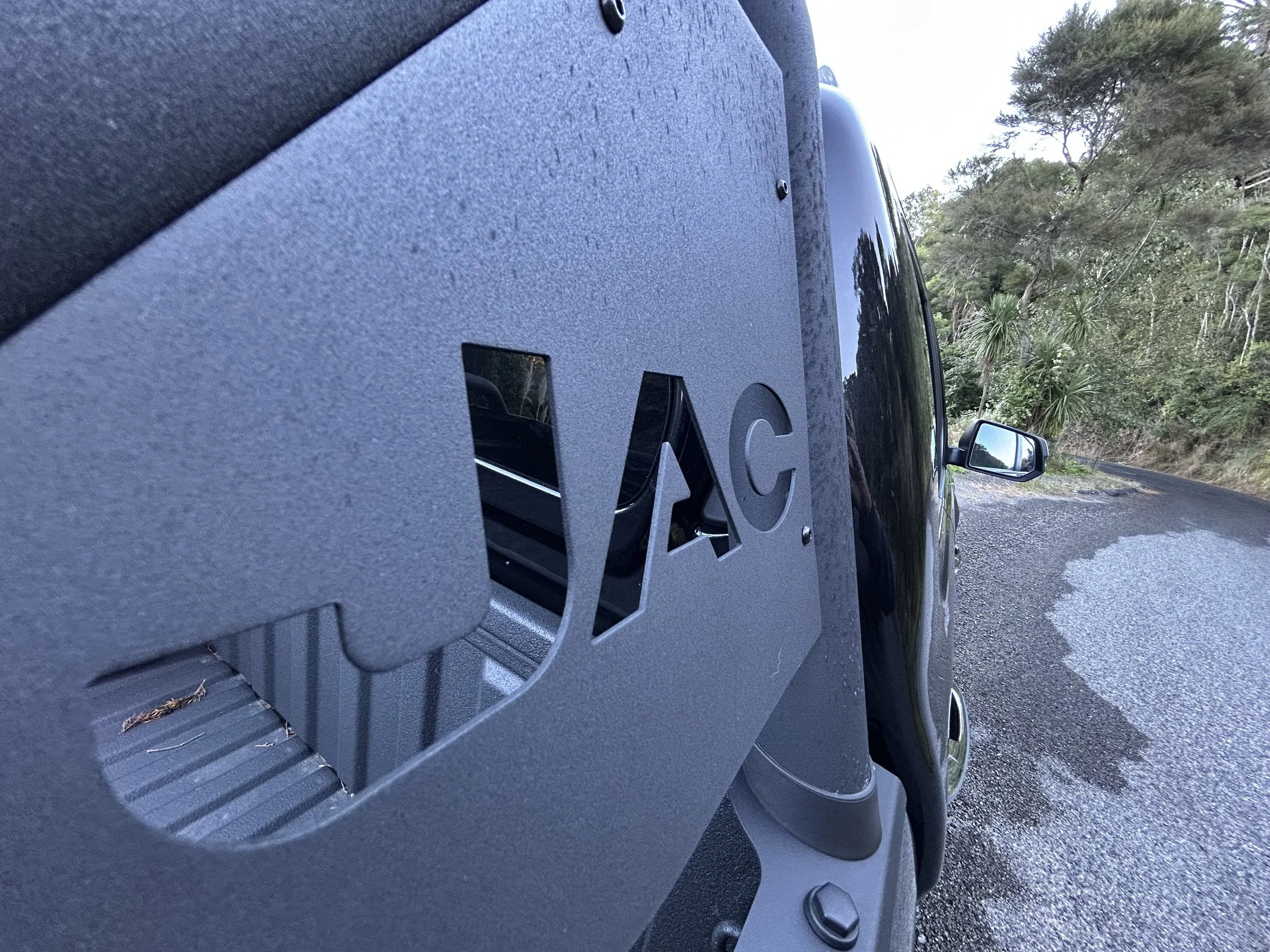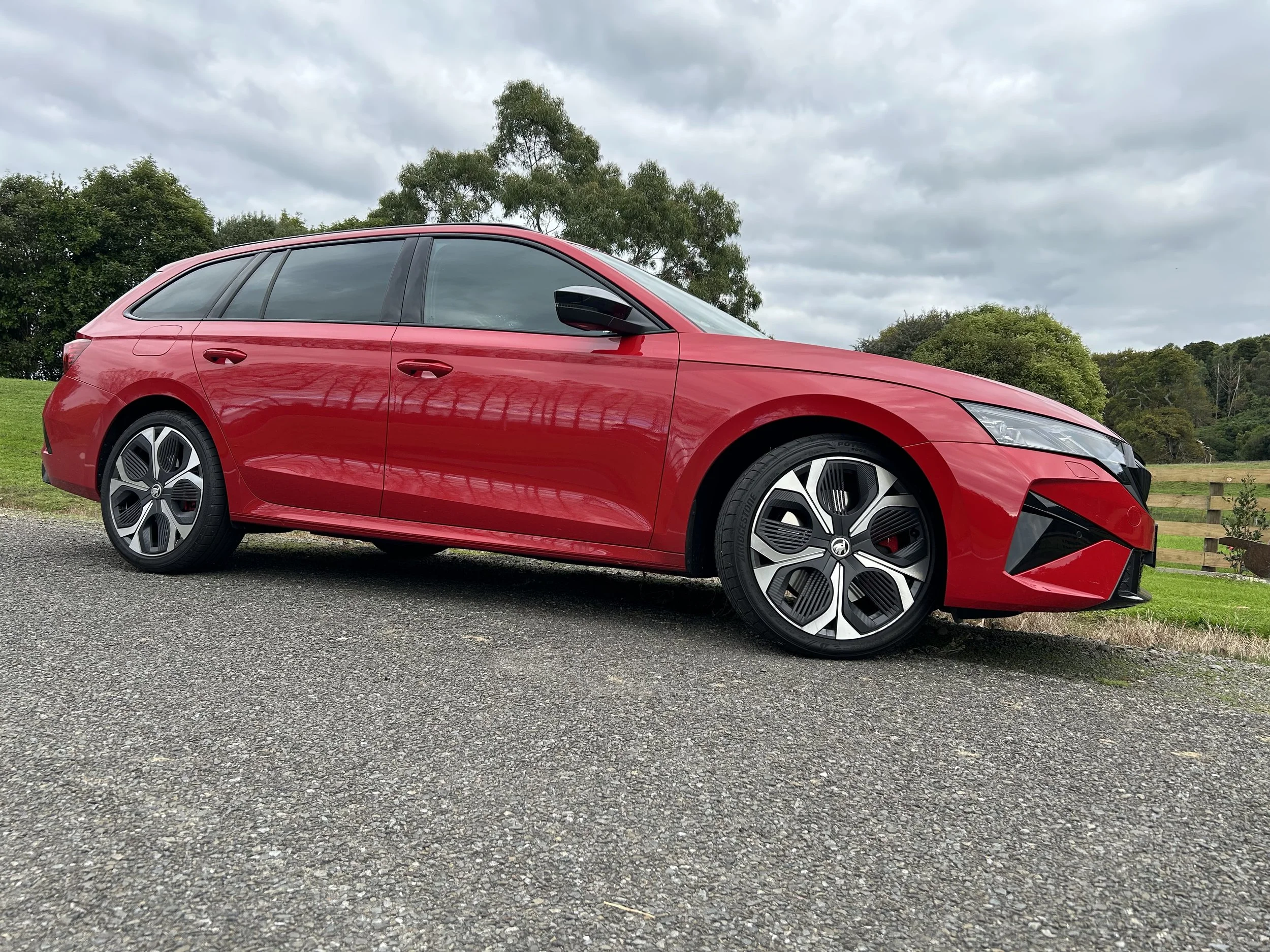Suzuki Swift first drive: Climate change
/The latest generation car puts additional effort into thrift-minded tech.
WHAT’S a small car specialist to do when its rivals, including all the world’s biggest car makers, decide making compact petrol hatchbacks is too hard?
Suzuki continuing on with the Swift isn’t a result of that broader industry perception having somehow ending up going undetected in a spam folder.
No, it knows how rivals feel. And it has acted on their abdication. By knuckling down on effort to keep the Swift in play, with certainty that less competition just means more opportunity to do even better.
While not disputing that profit margins with small cars are slim, nor ignoring that the market is moving on to sports utilities and, ultimately, electric, Suzuki has decided it can still earn a buck from making its light, compact petrol-dedicated car to the same old formula. More or less.
A risk? Given Swift has solidly continued to be a high volume-achiever, and it’s best selling product here, through lean times as well as good, the national distributor sees little issue with sticking with the status quo.
More or less. Swift isn’t quite the same as it has been. It has undergone a major refresh promising buyers more tech, better efficiency, more modernity … and new badges; GLS is the entry type, RSC the top spec.
Beyond this, a biggest single change: A firm and full allegiance to hybrid technology. Optional before, it’s the only choice now, still running with a 1.2-litre petrol engine, but in three-cylinder form now, having previously been a four-pot.
Ostensibly, nailing down to petrol-electric is a totally canny marketing move. Whanganui-sited Suzuki NZ has just to look at how well petrol-electric does for its closest automotive industry neighbour, market leader Toyota New Zealand in Palmerston North.
Hybridisation being the easiest understood technology and the one that asks for least change to driving style or spend is well-proven by the hordes of NZ-new Toyota types out there.
Still, it does demand a big change given the previous family, in addition to a hybrid, also had a full petrol 1.2 four that was the strongest seller, plus a turbocharged 1.0 three-cylinder and a 1.4-litre four. The latter seem to have no chance of going into the new shape, and while CVT and a five-speed manual continue, the old six-speed orthodox auto has gone.
Pricing also altering is a good news story, though with caveat that what’s being asked might not stick for long. Still, while the previous car cost as little as $24,990 to $33,000, the old hybrids were going for between $28,990 and $32,500 - and their new equivalents are much cheaper.
They span from $25,990 in manual and $27,990 CVT in GLS spec, rising to $29,990 in CVT-pure RSC. This pricing is set to be reviewed after August. Thereafter, there’s chance they’ll rise, perhaps to the old levels. You’ve been warned.
As for performance? Well, the Swift has always been famously perky, and that trait remains to the fore.
Yet evidence delivered on a launch run that went from Whanganui into the Rangitikei and Manawatu left firm impression it clearly has less to give in respect to punch than some of the previous powerplants.
No surprise, really. The old hybrid was the weakest of the four engines in the old range and, with 61kW and 112Nm now, the new has the same power and just 5Nm more torque. So, little gain on paper, barely felt on the road.
The weighs well under 1000kg, so there’s not a lot for even a small engine to pull. Yet, among all the engines this car has had, this could never be called the most energetic. Zero-100kmh experience is modest and no matter how hard it is revved, the response will never be called powerhouse. It’s fast enough to keep up with everyday traffic, yes, but you will have to plan overtaking with more care, now.
The examples for the test drive were all very low mileage, so that needs to be taken into consideration, but were working strenuously and at times loudly - though overall refinement is very good - on a drive through some back country areas, not least when attacking some decent ascents.
At same token, there’s a likability in how it operates, in respect to that you are never left in no doubt that it will always give its best, even if that best doesn’t amount to a whole lot. Three-cylinder engines always feel stout-hearted, and this one is no exception.
The manual transmission allows stronger communication with the sweet spots than the CVT, which is pretty so-so in the GLS as that version lacks the manual mode and paddle shifts meted the RSC. The cheaper type has a Low as an alternate to Drive and cannot be hand-shifted.
Most brands would have dropped a three-pedal model, but Suzuki NZ is keen to keep one “as a point of difference” and to meet a demand from perhaps one in every 10 Swift buyers. With manual, you get to enjoy more aural enjoyment. It doesn't sound especially sporty, but while this little engine is smooth and refined when driven quietly, it also gives an eager growl when you put your foot down.
What also helps the Swift is the chassis. The car still relies heavily on the predecessor’s lightweight Heartect platform, so unsurprisingly has inherited that type’s dynamic verve.
The Sport will remain the one to tie closest to the Swift’s pukka competition past; the sooner we know the brand will continue a variant that delivers flavour of that real rally and circuit-racing heritage, the better.
In isolation, the mainstream handles neatly, with good body control when chucked through corners. The brakes themselves are strong, too, with a progressive feel through the pedal, but the manual’s clutch is awfully dead. Urban driving was limited, but it does seem the low-speed ride might have stiffened up a little.
The make claims improvements to stiffen the shell, with more high-tensile steel and structural adhesives. There's also additional insulation material for a quieter ride. Suzuki claims the mild styling changes have improved aerodynamic performance by 4.6 percent with discrete spoilers, a reshaped bumper, and new alloy wheels.
The new car earns its hybrid badge from implementation of an integrated 48 volt starter generator, featuring a 2.3kW/60Nm DC motor feeding off a 12 volt lithium ion battery, there to give the engine a helping hand under load. It also uses energy regenerated when braking - also to help power the vehicle as well as improve efficiency - so is a mild-hybrid in designation.
The advantage over the previous hybrid is that it’s now a touch more fuel efficient - an optimal 4.0 litres per 100km from the manual and 4.3L/100km from the CVT, which previously topped at 4.7 - produces less CO2 and can push the car from rest to 100kmh a couple of tenths faster. That it demands 95 octane fuel will impact, but it is likely to be honest about its thrift. Even with a thrashing, the cars on the launch were returning no worse than 6.5L/100km.
Looks-wise, the 2024 car is clearly a bit bigger and with a chunkier visual ambience, but overall is more evolution than revolution. Same as always, then.
The car is slightly longer and lower than the outgoing type, measuring 3860mm long (up 20mm), 1735mm wide and 1485mm tall (down 10mm), with the same 2450mm wheelbase as before and brings into the roadscape near identical styling to a concept Suzuki revealed in 2022, with ingredients including a return to rear door handles.
Inside, the new cars picks up a fresh, enlarged to nine inches’ touchscreen with enhanced connectivity, including the same wireless Apple CarPlay/Android Auto first seen on last year’s S-Cross update.
The GLS comes standard with parking sensors, built-in navigation, keyless entry with push-button start, and traffic sign recognition amongst its safety features, but it misses out on some fundamentals such as a height adjust for the driver’s seat, and whereas its equivalent in the old range had alloys, this one steps back to steel rims with wheel covers. The RSC is more fulsomely equipped, adding alloy wheels, heated front seats, shift paddles, a reversing camera and climate air. But these are the first Swifts without a spare wheel.
Meeting the car in the metal raised more thought that I’d imagined it might about the styling. It’s clearly not to going to be troubling for fans; overall, there’s a lot of sameness. Yet the detailing has altered and you might quibble about whether that’s a good thing. It’s hard to say everything has headed in the most attractive direction.
The grille and the lights clearly feel like a twist on the previous generation's design, but the pronounced belt line is challenging - I agree with overseas’ sentiment that it gives the impression this is a car designed in two halves, with more attention meted the ‘top’ areas above the waistline than those below.
Basically, now, there’s a very modern glasshouse, with wraparound-effect windscreen pillars and a new spoiler, plus there's a kind of clamshell bonnet design, but the metalwork beneath that it is less interesting. Is it uglier than its predecessor? Except plenty of chatroom discussion. That Suzuki offers plenty of styling detail enhancements - the full swathe of which featured on the blue car pictured (advice: Take the stickers, definitely ignore the chrome-look fuel cap cover) - suggests the factory is aware the look as it leaves the factory could stand some jazzing up.
The interior refit is more of a success story. The design is definitely more modern, and though hardly cutting edge in its graphic and speed, that new touchscreen is a friendlier device and more useful in being slightly angled towards the driver.
We've become quite accustomed to such systems being accompanied by digital instruments and head-up displays, but the Suzuki sticks solidly by classic analogue dials. Obviously, it's a tried-and-tested way of doing things and it’s coherent, but it feels a bit old-fashioned. The panel seems awfully busy, too, with loads of icons, mainly for for driver assist functions.
The driving position is solid and the car is helped by having decent front seats. The new cabin trim-out is less visually austere than before; a swathe of pale trim across the dash brightens things up and some 3D texturing around the air vents makes it feel a touch more upmarket.
The cabin seems fairly roomy, with enough space for four quite tall adults, but the boot space is not brilliant, with just 265 litres on offer when all five seats are upright. That's much the same as with the old Swift, but behind cited rivals the Toyota Yaris and Honda Jazz and well down on some small European choices.
In many ways, this fourth generation is just as it was expected to be; carrying on where the old car left off, but feeling a bit more modern than before, maintaining a decent value for money proposition, and set to be cheaper to drive.
What’s next? Electric is in the brand’s future planning, but likely as not the Swift might avoid that and instead settle in to what it is now.
The brand seems adamant that mild-hybrid technology is what the customer wants. Argument that with small electric and hybrid vehicles still proving costly and restricted by range department, a small car with an efficient petrol engine still seems a compelling idea.
That it looks very much the one before, which in turn pretty aped its own predecessor, could well cause confusion, but conversely this is a styling theme that has cemented consumer comfortableness.
Swift’s standing as the product young singles not only often chose as their first new car, and their grandparents select as their last, plus plenty of in-betweeners, is likely still solid.
Perception of this being a budget runner that’s cheap, looks cool, has enough features to be a convenient city car and enough cojones and safety cred to run confidently on the open road is not mis-placed.
The writer attended this event as a guest of the distributor, with a meal and a small gift provided.

